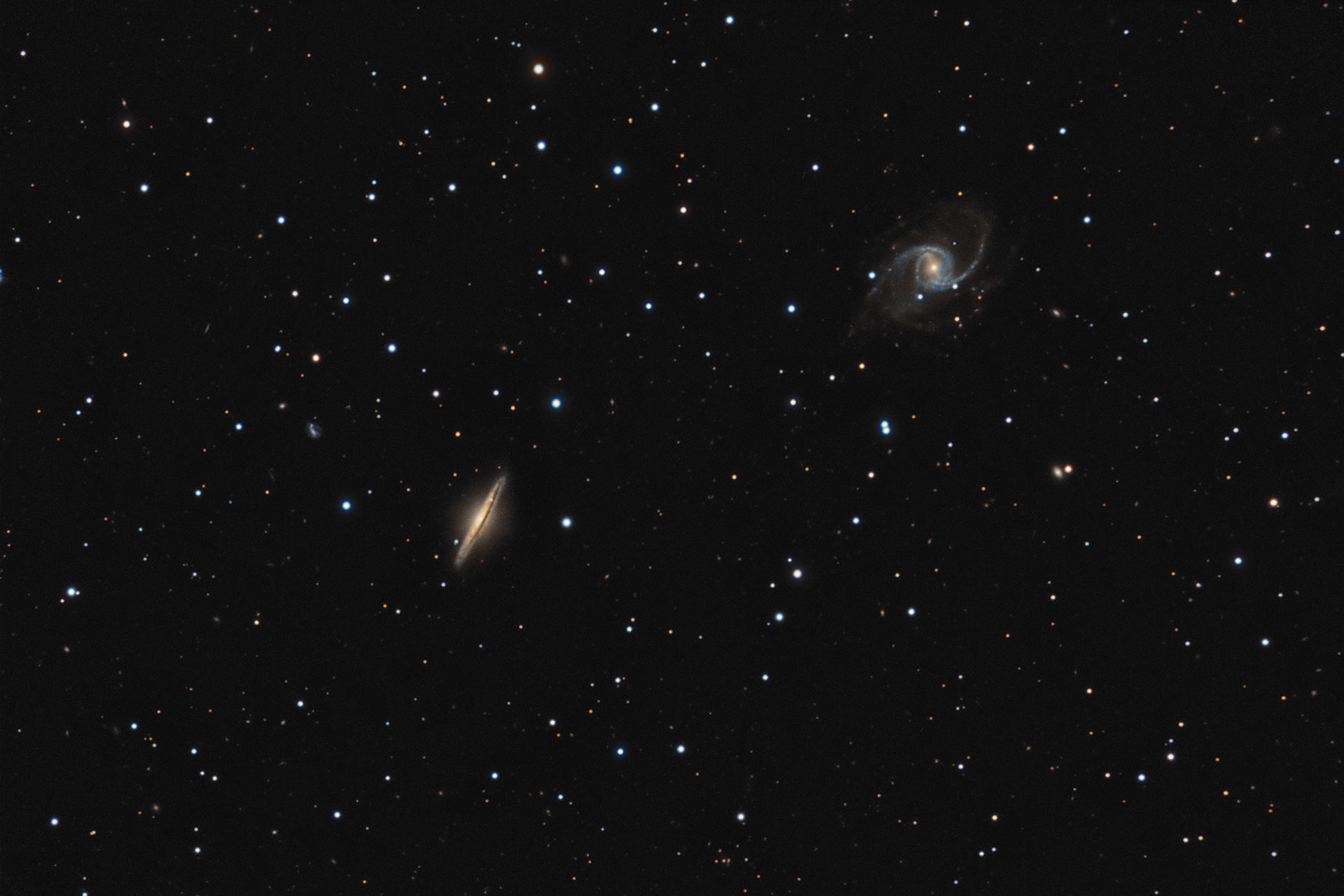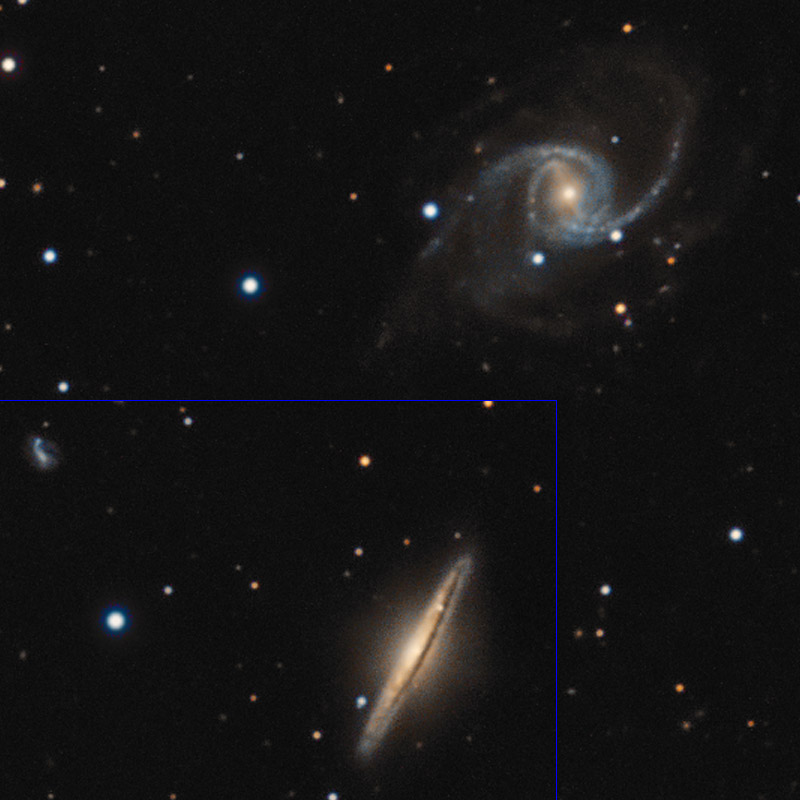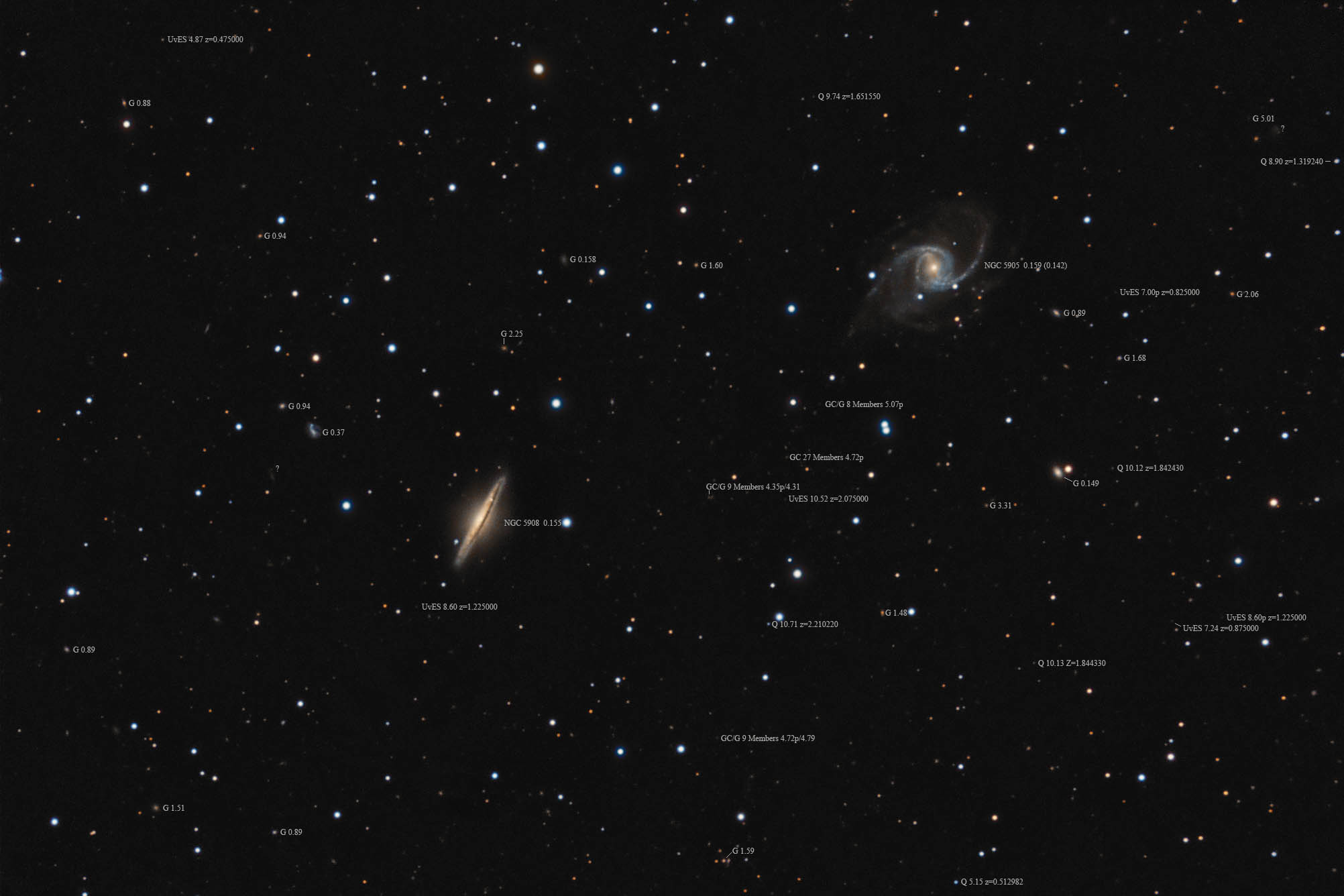| Description | Images |
Object name: NGC5905Designation(s): NGC5905, NGC5908, NGC 5905 and 5908 are a pair of spiral galaxies in Draco less than a degree north of Bootes. They are a bit under 160 million light-years away. Most sources say they are not interacting. Though NGC 5905 certainly looks like it was torn up by some interaction in the recent past. NED and the NGC Project classify NGC 5905 as SB(r)b;HII Sy1 and SBb respectively. For NGC 5908 they both say Sb though one paper says it could possibly be Sc based on its very small core. Assuming a distance of about 155 million light-years these are large spiral, NGC 5908 is about the size of our galaxy at 122,000 light-years. Measuring the full extent of NGC 5905's distorted arms I get a size of 240,000 light-years making it an extremely large spiral though this is more due to its distortion than its being very massive as spirals go. Prior to being drawn out it likely was no larger than NGC 5908. Related Designation(s):1AXG J151648+5525, 1RXS J151523.3+553057, 1WGA J1515.3+5530, 2MASS J15152332+5531020, 2MASS J15164318+5524333, 2MASX J15152332+5531015, 2MASX J15164322+5524332, 2MASXi J1515233+553102, 2MASXi J1516432+552438, AKARI J1515231+553105, AKARI J1516426+552428, BMW-HRI J151643.2+552432, CALIFA 791, CG 0672, CGCG 1514.0+5542, CGCG 1515.3+5535, CGCG 274-036, CGCG 274-039, CXO J151523.3+553102, EON J229.180+55.409, GALEXASC J151523.26+553103.2 , HDCE 0900 NED004, HDCE 0900 NED005, IRAS 15140+5541, IRAS 15153+5535, IRAS F15140+5542, IRAS F15153+5535, ISOSS J15167+5523, LDCE 1103 NED006, LDCE 1103 NED007, LGG 395:[G93] 003, LGG 395:[G93] 004, LQAC 228+055 018, MCG +09-25-038, MCG +09-25-041, NGC 5905, NGC 5905:[RW2000] X-01, NGC 5908, NGC5905, NGC5908, NSA 145973, NSA 145995, NVSS J151523+553100, NVSS J151643+552431, PGC 054445, PGC 054522, RBS 1475, RX J1515.3+5530, RX J1515.3+5530:[BEV98] 002, RX J1515.3+5530:[ZEH2003] 02 , SDSS J151523.33+553102.2, SSTSL2 J151523.33+553101.7, SSTSL2 J151643.24+552432.6, UGC 09797, UGC 09805, UZC J151523.4+553102, UZC J151643.4+552435, UZC-BGP 73A, UZC-BGP 73B, [M98j] 241 NED03, [M98j] 241 NED04, [SLK2004] 1111, [VCV2001] J151523.2+553105, [VCV2006] J151523.2+553105, [VFK2015] J229.18016+55.40880 , |


